Anatomy of a Timetable
Many people are familiar with railroad public timetables. If not the exact layout and information contained therein, they would be familiar with the concept that the trains stop at a certain place at an appointed time to take on and let off paying passengers. When I hired on with the N&W, I discovered employee timetables. I had no idea of all the information they contained. I am sure you have found that it is far more difficult to obtain these timetables first hand than it used to be. This is because there are far fewer active railroaders and, with the wholesale closure of depots and towers, there are fewer opportunities for the public in general and rail fans in particular to interact with railroad personal.
This might be an opportune time to examine the anatomy of a railroad employee timetable. I have chosen a Norfolk Southern Piedmont division timetable from the 1990's as an example.
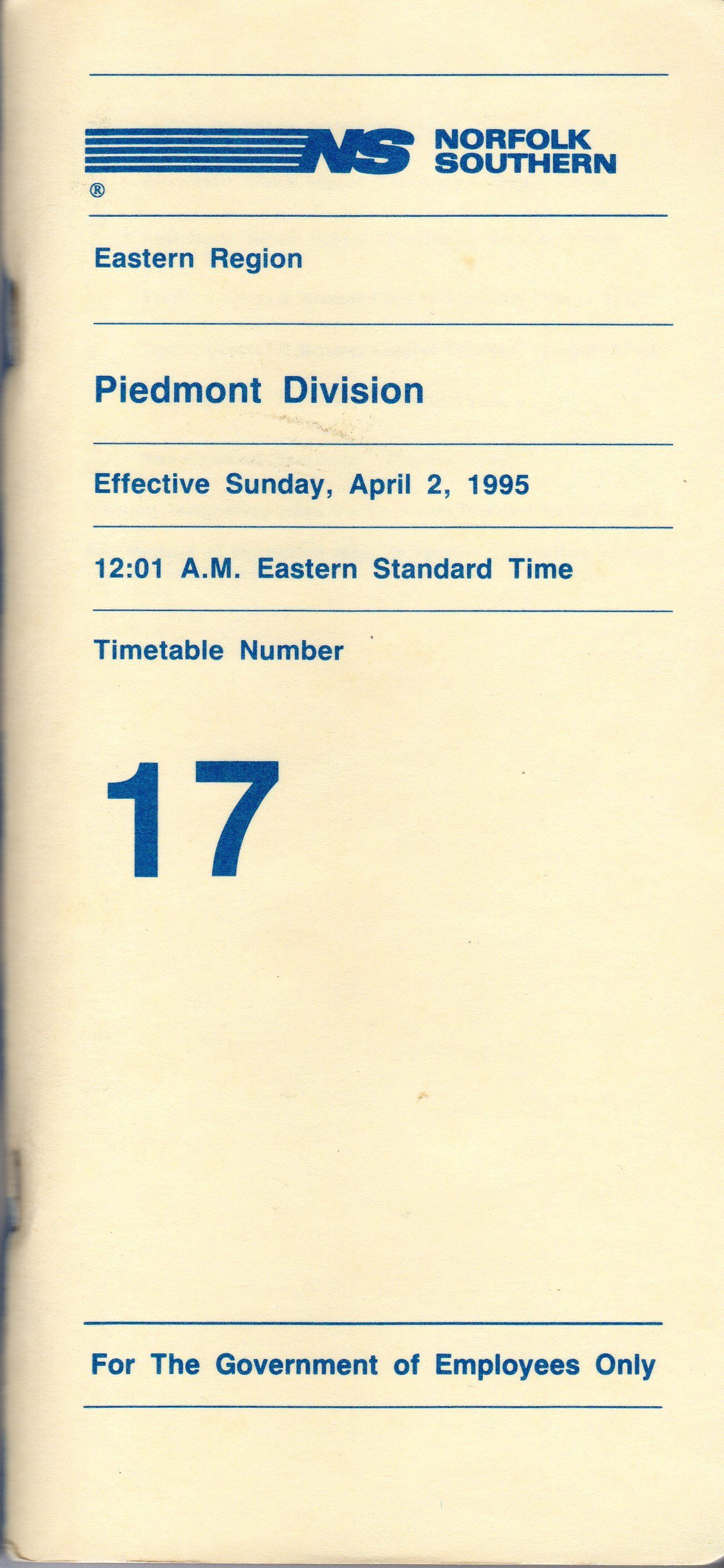
Following the merger of the Southern Railway and Norfolk & Western in 1981, the newly formed Norfolk Southern took on the timetable format of the N&W for reasons unknown to me. They measured 4 1/2" x 9 1/2" and were stapled together, not loose leaf as the Operating and Safety Rulebooks. Prominent on the cover is the region and division names, effective date and time and the timetable number. Note that nothing on the railroad ever happens at exactly noon or midnight. It is always 12:01PM or 12:01AM. This eliminates a possible point of confusion. The N&W/NS maintained the same beige cover but changed the cover color print with each new issue to ensure expired timetables would stand out and not be used.
The station pages, probably the most familiar feature of a timetable, have changed greatly over the years. In addition to the location (no longer depot) names, mile posts and sidings, timetables from an earlier time contained the arrival, departure and meeting times of first, second and third class trains. Those were the days of schedules and train orders as well as agents, operators, depots and towers located every few miles along the line before radios, centralized traffic control and track warrants.
As you can see, the station pages are simpler. These pages cover the mainline from Lynchburg, VA south to Salisbury, NC and Salisbury to Greenville, SC. The layout is pretty straight forward with columns for capacity of sidetracks, mile posts, stations, tracks & signals, interlockings, railroad crossings and finally number of miles from Washington Union Station. This was all double track at one time but as the number of trains decreased and Centralized Traffic Control installed, large sections of the second main track were removed leaving alternating double and single-track. The "Y" next to some stations signifies the presence of a wye track where locomotives and cars can be turned. The "DN" denotes an operator on duty 24/7 (Day/Night). The next column designates this is Traffic Control / Remote Control territory. One line is single track and two lines for double track. There is only one interlocking and railroad crossing which is located at Graham, NC, MP377.1. In the Special instructions section, you find this has controlled signals (not automatic) and the CSX is the crossing railroad.
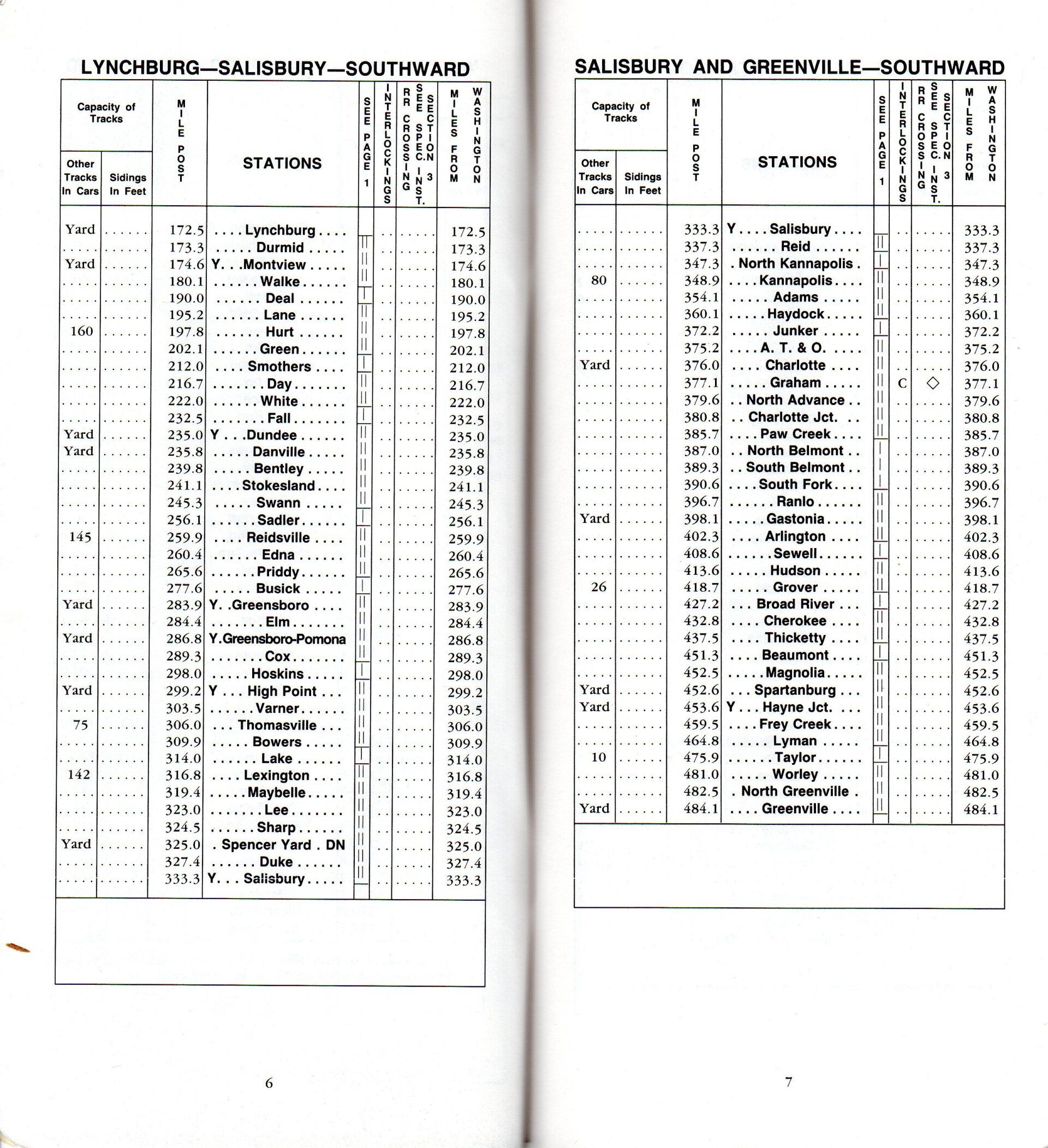
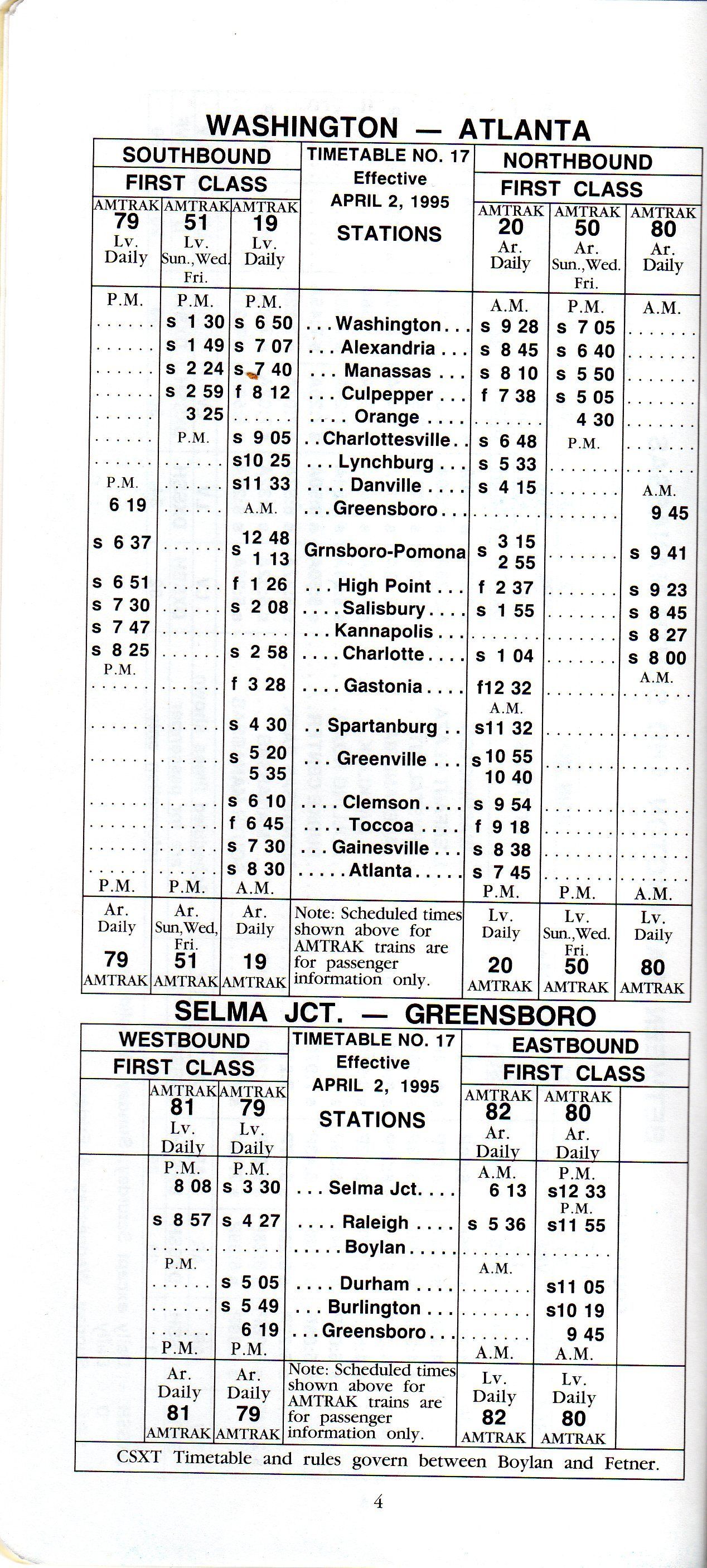
Amtrak schedules are included only for information and guidance of employees. They do not grant schedule rights or superiority to the trains.
One of the critical elements in every employee timetable are the speed limits. These pages show some of the system wide General Speed Restrictions on specific cars, locomotives and trains. On the right hand page are the speed restrictions by district, starting with the Washington District between AF Tower and Monroe, VA. It starts with overall speed limit for passenger, Rail Highway and freight trains, then proceeds to speed restrictions specific turnouts and curves.


One of my favorite parts of a timetable is the map. Not all employee timetables have them but they are useful to see how the station pages actually fit in with the rest of the railroad. The Piedmont division has grown considerably since the merger and now includes the former Eastern and Carolina divisions. This one division includes many of the much smaller Southern Railway divisions. This map is located at the centerfold.
This page shows the tonnage ratings of 4 groups of similar sized locomotives between pairs for cities. It also shows line segments where six axle engines are prohibited.

Not everyone is a railfan knowing the different makes and models of locomotives so Norfolk Southern includes a complete roster of their locomotives by road number and model.
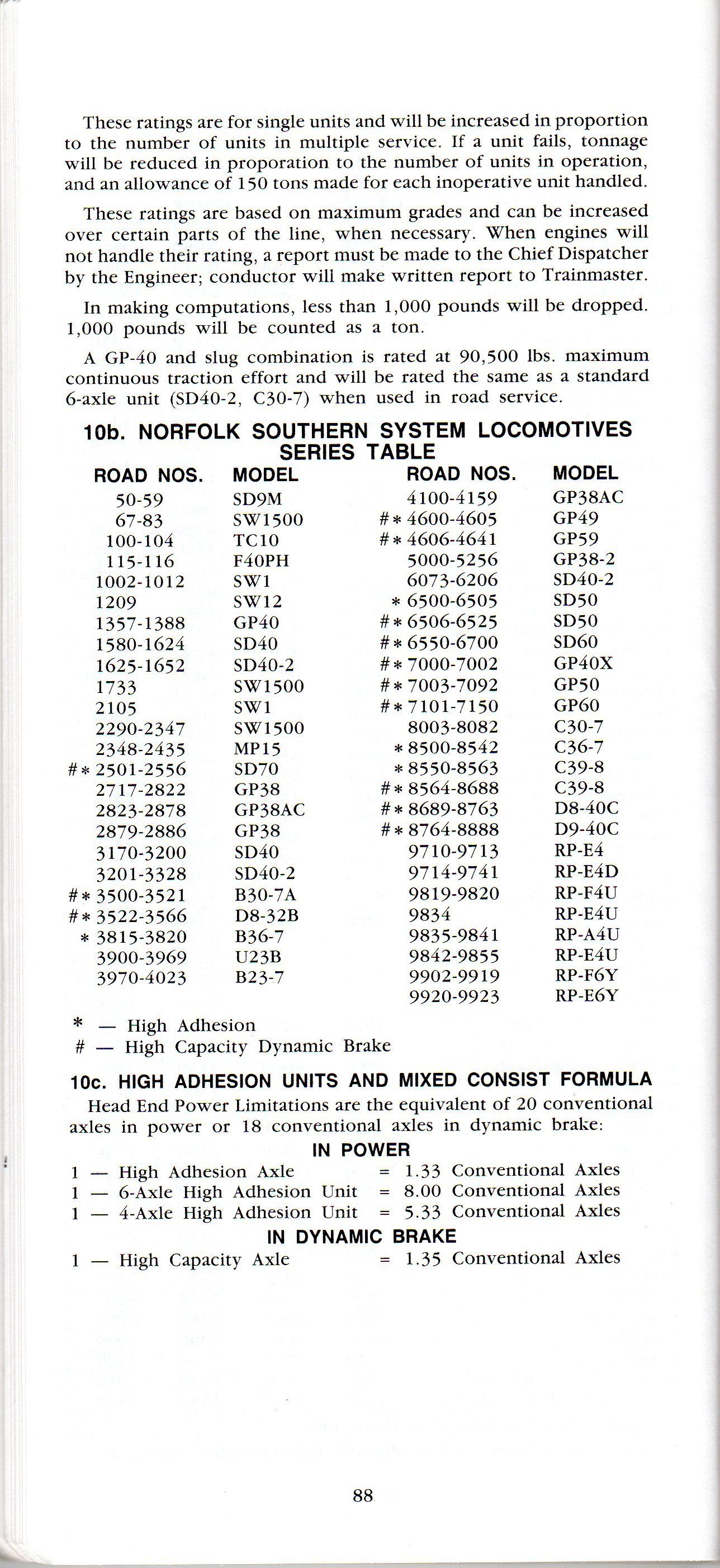
Even in this modern technological age, certain aspects of railroading remain constant. One is the requirement of a high quality, highly accurate railroad approved timepiece. My 40 year old Pulsar wristwatch still runs like a champ. These pages list the approved watches as well as the location and hours of open agencies. Even though the small town depots are gone, there are still agents on duty at the larger yards.

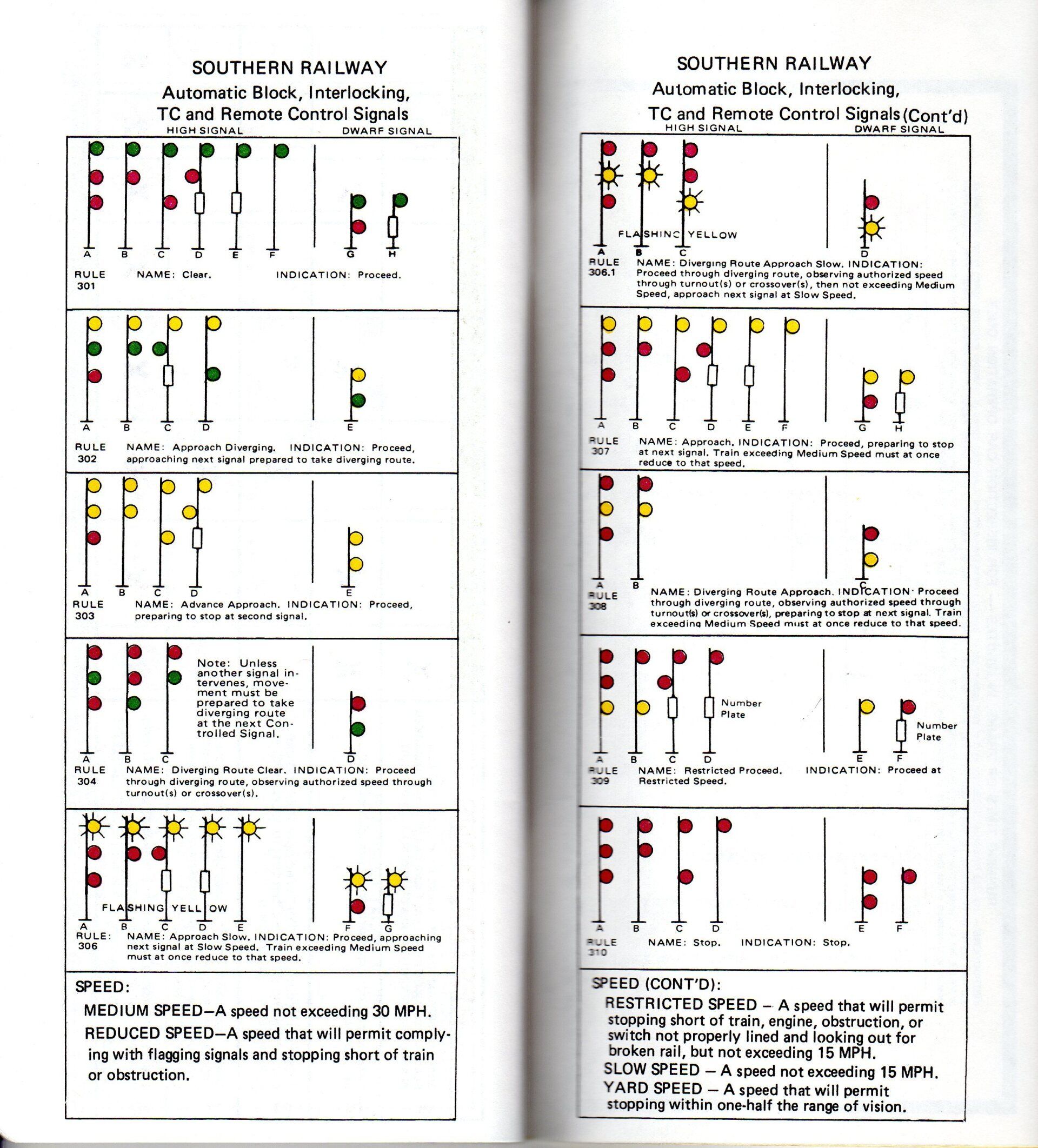
Railroaders are required to know the signal names and indications by heart. Their lives depend on it. Just in case, though, the signals found on their division are included in the timetable as well as the Operating Rulebook.
And finally, the back cover. It's the same colors as the front. The diagonal stripes provide for better visibility. This size timetable fit easily in a pocket and could be used for hand signals.
